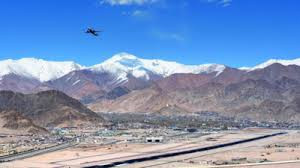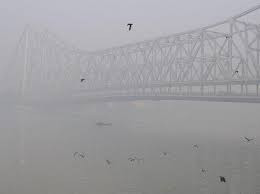Extreme Heat in Cold Desert Leh Threatens Aircraft Safety

IIE digital desk:Leh, renowned for its chilly desert climate, is experiencing an unprecedented temperature spike, reaching a sweltering 35 degrees Celsius. This unusual heatwave poses serious risks for aircraft operations at the region's high-altitude airport.
The extreme temperatures are challenging the performance and safety of aircraft engines, which are not designed to operate efficiently under such conditions. Aircraft engines typically struggle with reduced efficiency and increased risk of mechanical failure when exposed to temperatures significantly higher than their operational limits. In Leh, the elevated heat is exacerbated by the thin air at high altitudes, compounding the strain on engines.
Airport authorities and airlines are closely monitoring the situation, implementing precautionary measures to ensure passenger safety. These include stricter maintenance checks and adjustments to flight schedules to avoid peak heat hours. Travelers are advised to check flight statuses regularly and prepare for potential delays.
This heatwave underscores the impact of climate anomalies on aviation safety and highlights the need for ongoing adaptation to ensure reliable and safe air travel in extreme conditions.Aircraft performance is degraded under conditions of low density caused by high temperature. Such scenarios are factors at airfields that are ‘hot’ due to the general climate (seasonal or otherwise) and ‘high’ by virtue of being located at high elevation.
Airport authorities and airlines are closely monitoring the situation, implementing precautionary measures to ensure passenger safety. These include stricter maintenance checks and adjustments to flight schedules to avoid peak heat hours. Travelers are advised to check flight statuses regularly and prepare for potential delays.
This heatwave underscores the impact of climate anomalies on aviation safety and highlights the need for ongoing adaptation to ensure reliable and safe air travel in extreme conditions.Aircraft performance is degraded under conditions of low density caused by high temperature. Such scenarios are factors at airfields that are ‘hot’ due to the general climate (seasonal or otherwise) and ‘high’ by virtue of being located at high elevation.
You might also like!
















